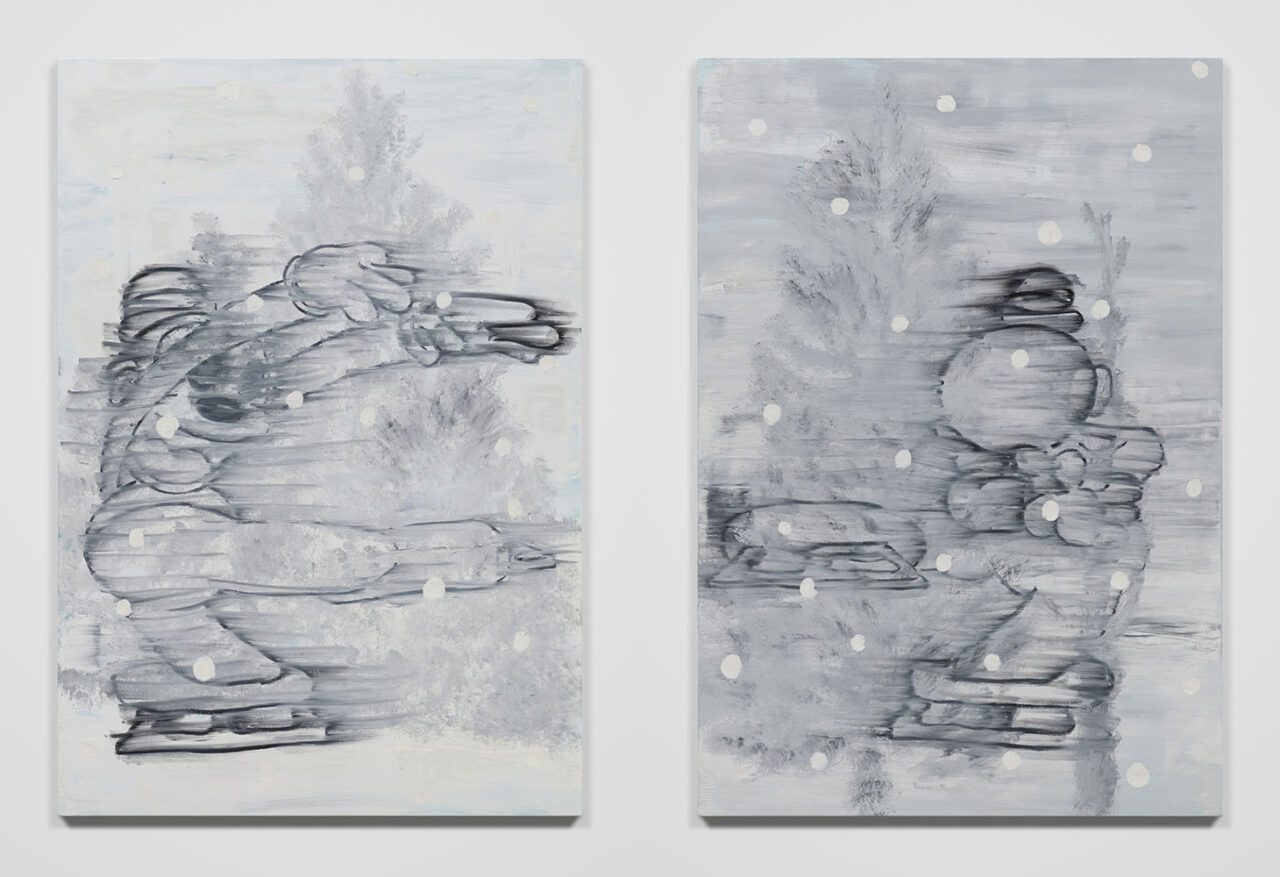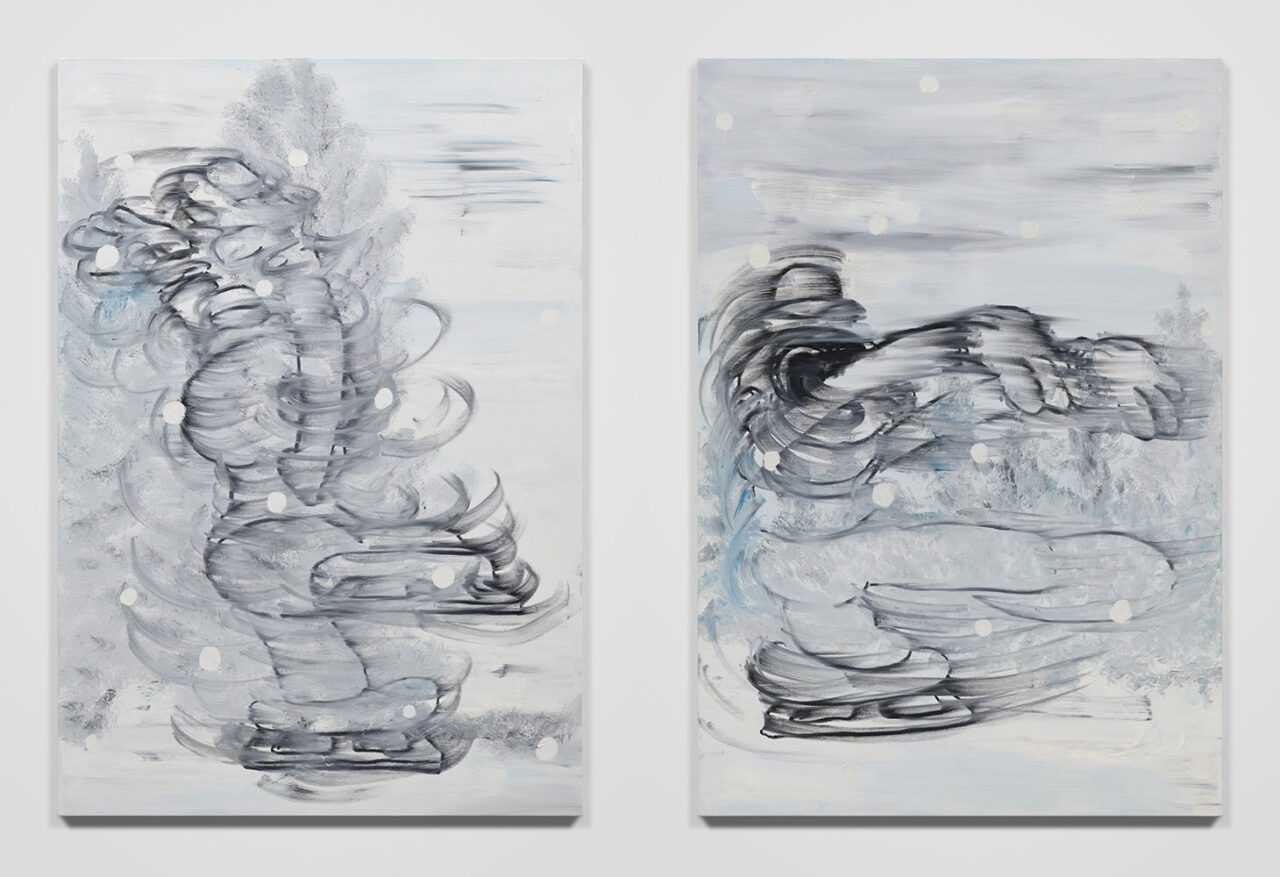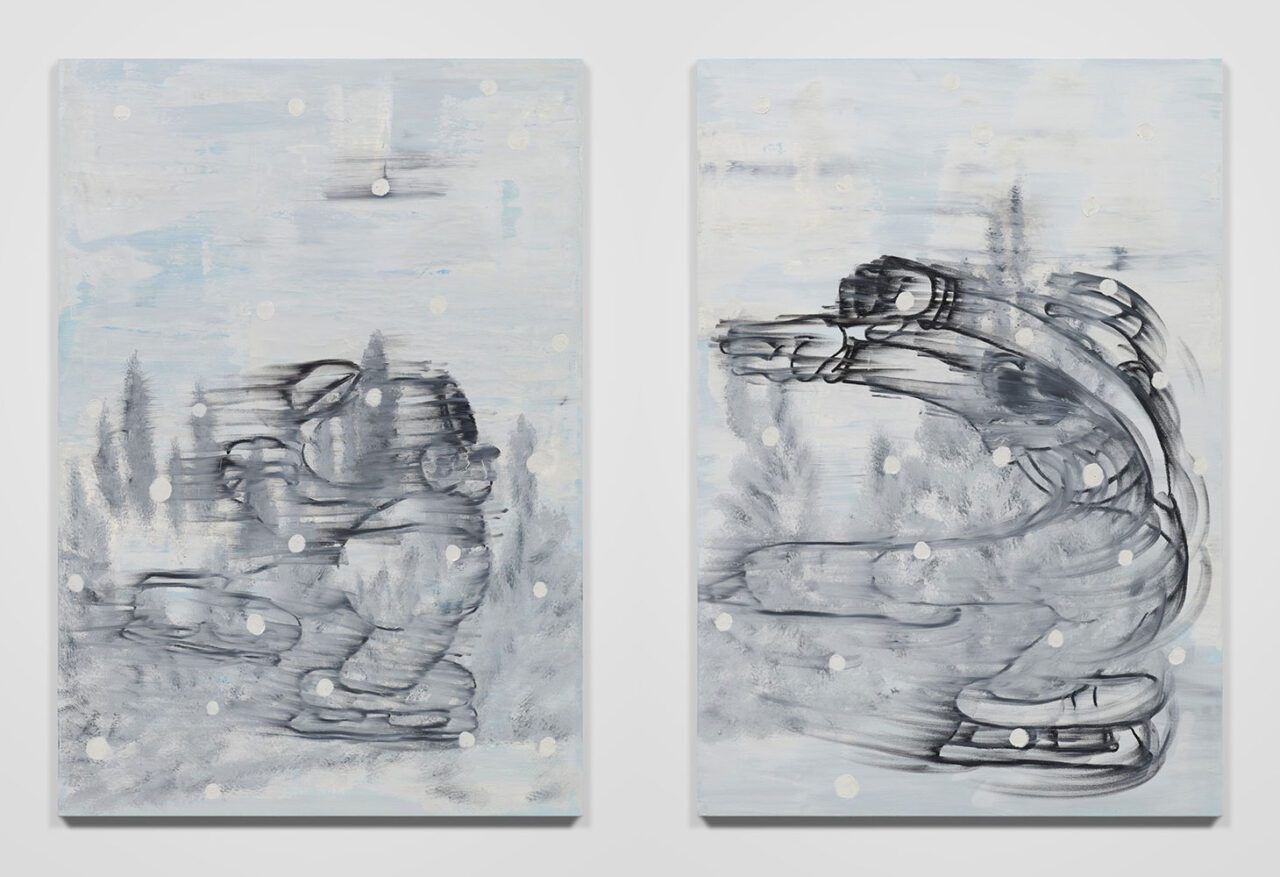ART CITIES: N. York-Gary Simmons
 Emerged during the late 1980s and early 1990s, Gary Simmons has achieved wide acclaim over the past three decades for his work which explores the politics of race, class and social stereotypes through painting, sculpture, sound and architectural environments. Simmons uses imagery drawn from popular culture to create works that address personal and collective memories.
Emerged during the late 1980s and early 1990s, Gary Simmons has achieved wide acclaim over the past three decades for his work which explores the politics of race, class and social stereotypes through painting, sculpture, sound and architectural environments. Simmons uses imagery drawn from popular culture to create works that address personal and collective memories.
By Efi Michalarou
Photo: Hauser & Wirth Gallery Archive
Gary Simmons’ use of pedagogical motifs, in particular readymade chalkboards, led to the formal and aesthetic breakthrough that would inform much of his subsequent work, in which erasure of the image has been a powerful and recurring theme. Outlines of characters, scenes and words—based on 20th-century cartoons steeped in the racist traditions of minstrelsy, disappeared architectural sites, vintage film title cards, evaporating clouds of smoke and stars—are drawn or painted then blurred and smeared by hand. The tropes of erasure and ephemerality suggest the fleeting nature of memory and histories re-written. As the artist explains: ‘I started to think about how images on blackboards can never be fully erased. It was about trying to erase a stereotype and the traces of the racial pain that you drag along with you.’ A landmark piece commissioned for the Whitney Biennial, ‘Wall of Eyes’ (1993), picturing a smudged field of cartoon eyes drawn with chalk over slate paint applied directly to the wall, revealed the aesthetic possibilities of chalkboard at a monumental scale. For his solo exhibition Gary Simmons introduces a new body of work advancing his decades-long exploration into issues that haunt the American psychè—race, representation and collective identity. “Thin Ice” debuts sculpture, paintings and drawings—including a sequence of canvases that isolate and re-purpose archetypical racialized imagery from cartoons of the 1920s and early 1930s, and a site-specific wall drawing referencing one of the most iconic films of the 1960s—to capture the instability and disorientation of the current American moment. Simmons’ art skates deftly between abstraction and representation via his signature technique of erasure. This formal conceit upends the viewer’s sense of certainty; by degrading familiar icons, he exposes latent meanings and ugly truths lurking just behind the surface of popular imagery. For example, Simmons has consistently used Bosko and Honey*, a pair of racist cartoon characters first created in 1928, as avatars of institutionalized racism. Bosko reappears in the exhibition but with a new and unmistakable urgency. The exhibition opens with a painting that depicts him as a fiddle player frenetically sawing away at his strings. This work signals the start of a performance that will unfold across several successive canvases in which Bosko glides on ice skates to execute a single disjointed pirouette. Together the works achieve the effect of a stop motion film or comic strip. Simmons has blurred the contour lines of Bosko’s whirling figure, an expressive tactic that induces a vicarious sense of dizziness in the viewer. Simmons’ new site-specific wall drawing, “Somewhere, My Love” alludes to the unique material history of David Lean’s Academy Award-winning epic ‘Doctor Zhivago’ (1965) and adopts one of the film’s most memorable visuals—a lavishly ice-encrusted palace. Though its narrative is set in pale, frozen locales during World War I, ‘Doctor Zhivago’ was, in fact, filmed primarily during a winter heat wave in a staged Potemkin village erected near Madrid, Spain, where beeswax and dust from a local marble quarry were repurposed as imitation snow and ice. For Simmons, that feint becomes a stand-in for the artifice and seductive deceit coursing through popular culture and media—and, sometimes, by design, in art itself. “Thin Ice” also unveils a new sculpture replete with its own unique set of conceptual and physical paradoxes. Constructed from steel, foam and polyurethane, and finished with automotive paint, “Black Frosty” (2024) resembles a snowman cast in obsidian or coal, his neck ensnared by a 20-foot-long, hand-knit noose made of white wool, suggesting an underlying violence often masked by civility. An adjacent large-scale painting depicts a constellation of black stars streaming across a hazy blue and white sky, mirroring the inverted color palette of Simmons’ snowman. Here, the heavens are punctuated by points projecting the absence of light and ‘Black Frosty’ remains frozen in time, forever on the verge of dissolution.
*Bosko and Honey are animated cartoon characters created by animators Hugh Harman and Rudolf Ising, both former employees of Walt Disney. Bosko is the first recurring character in Leon Schlesinger’s cartoon series, and is the star of over three dozen Looney Tunes shorts released by Warner Bros. He was voiced by Carman Maxwell and Johnny Murray during the 1920s and 1930s, and once in Tiny Toon Adventures by Don Messick during the early 1990s.
Photo left: Gary Simmons, Going Through Progressions #6, 2024, Oil paint on canvas, 198.1 x 137.2 cm / 78 x 54 in, © Gary Simmons, Photo: Keith Lubow, Courtesy the artist and Hauser & Wirth Gallery. Photo right: Gary Simmons, Going Through Progressions #4, 2024, Oil paint on canvas, 198.1 x 137.2 cm / 78 x 54 in, © Gary Simmons, Photo: Keith Lubow, Courtesy the artist and Hauser & Wirth Gallery
Info: Hauser & Wirth Gallery, 134 Wooster Street, New York, NY, USA, Duration: 2/112024-2/1/2025, Days & Hours: Tue-Sat 10;00-18:00, www.hauserwirth.com/

Right: Gary Simmons, Going Through Progressions #1, 2024, Oil paint on canvas, 198.1 x 137.2 cm / 78 x 54 in, © Gary Simmons, Photo: Keith Lubow, Courtesy the artist and Hauser & Wirth Gallery

Right: Gary Simmons, Going Through Progressions #6, 2024, Oil paint on canvas, 198.1 x 137.2 cm / 78 x 54 in, © Gary Simmons, Photo: Keith Lubow, Courtesy the artist and Hauser & Wirth Gallery
